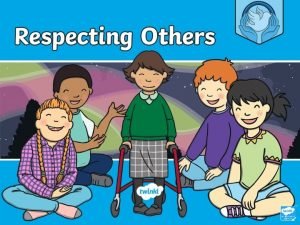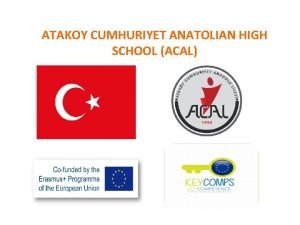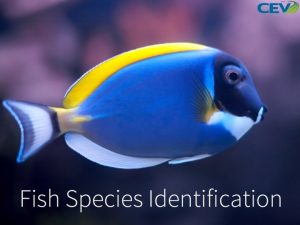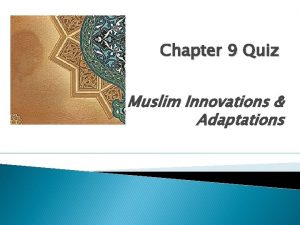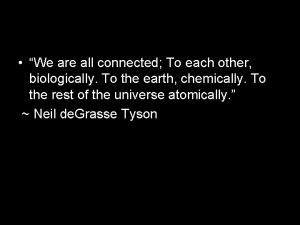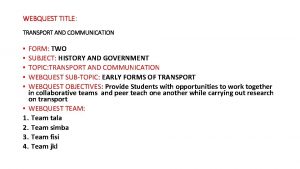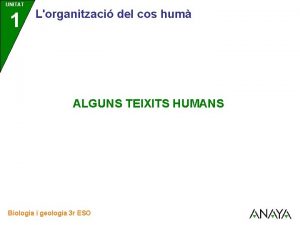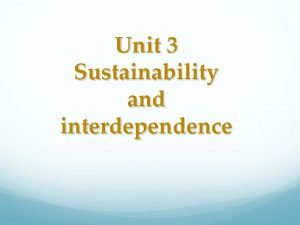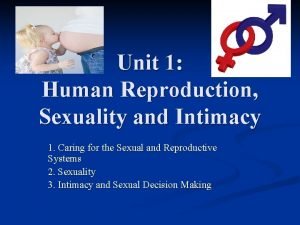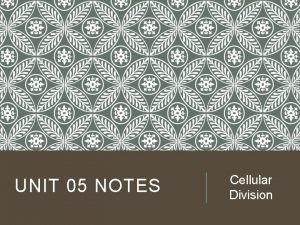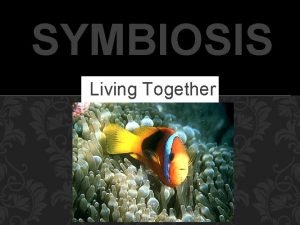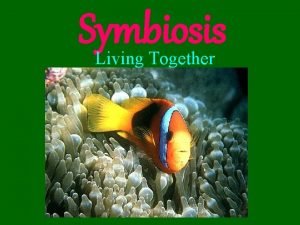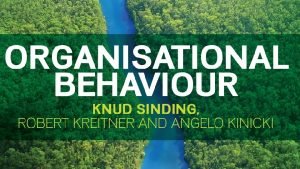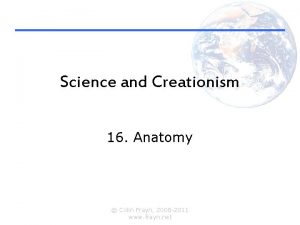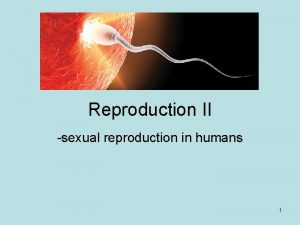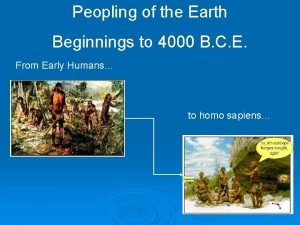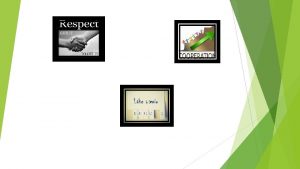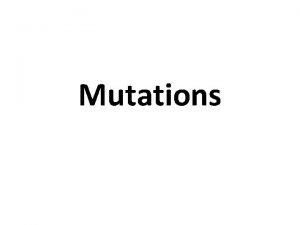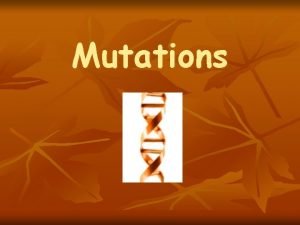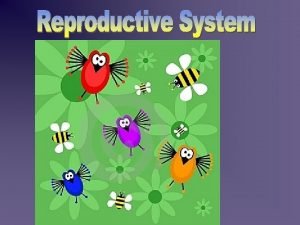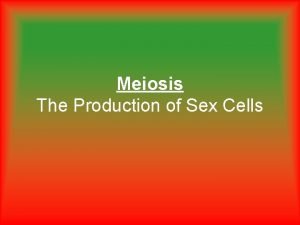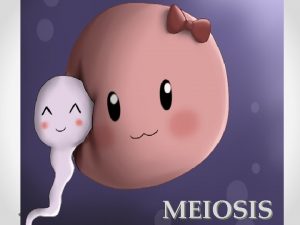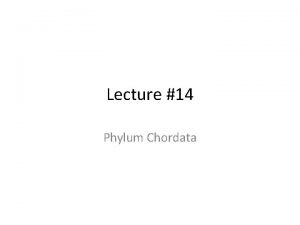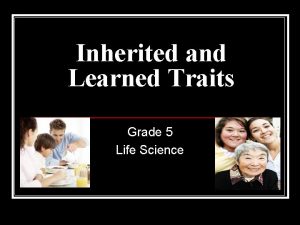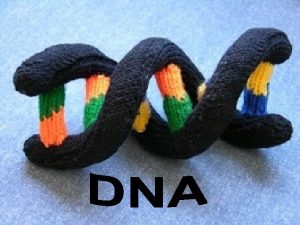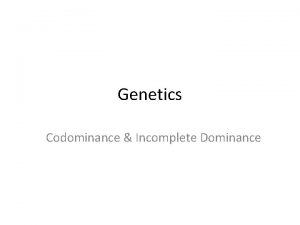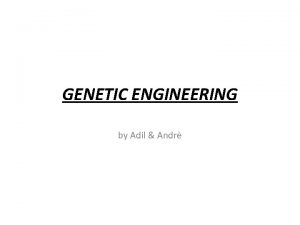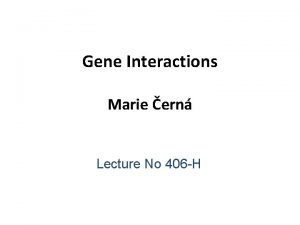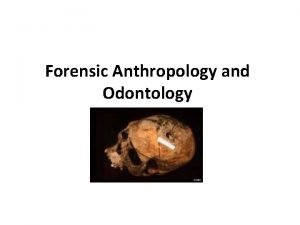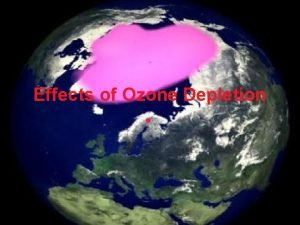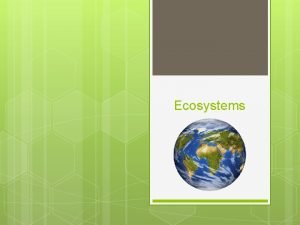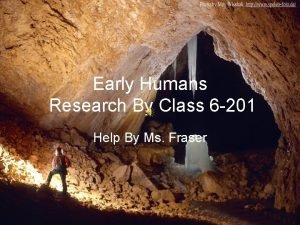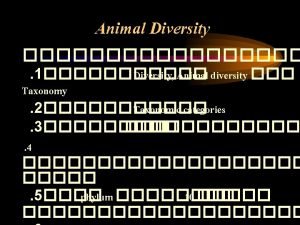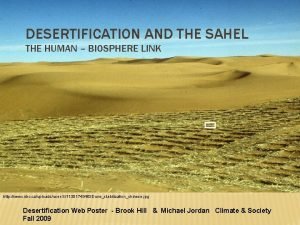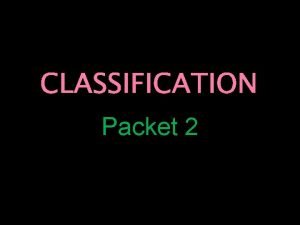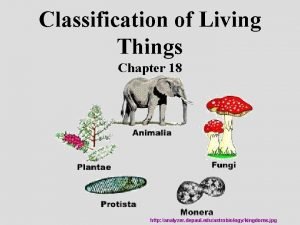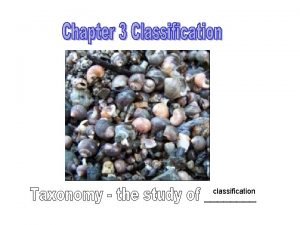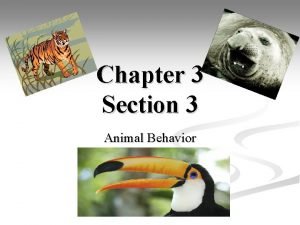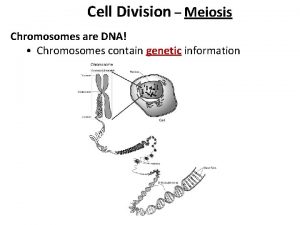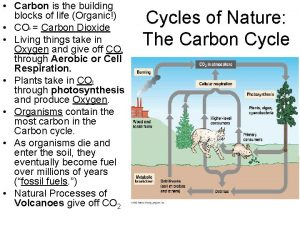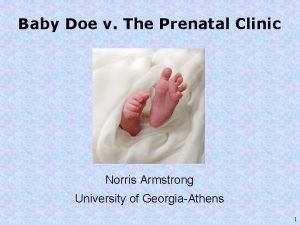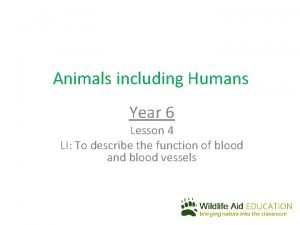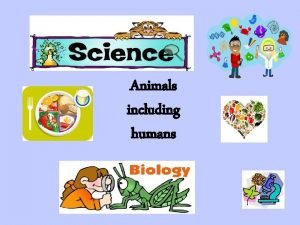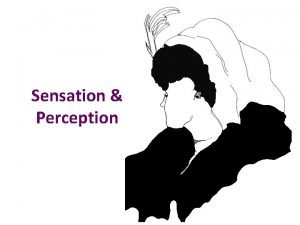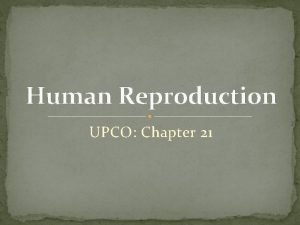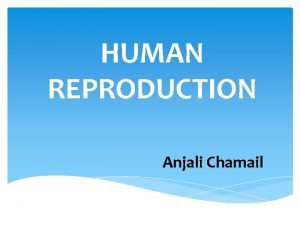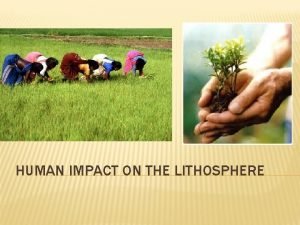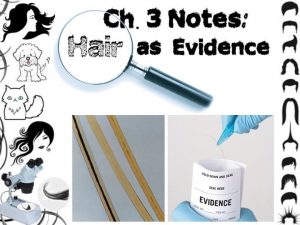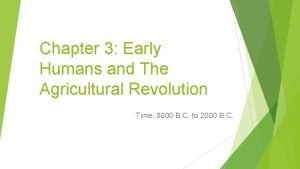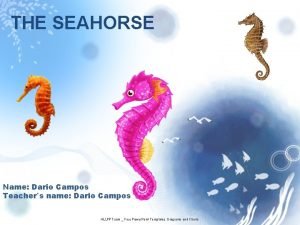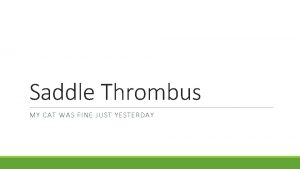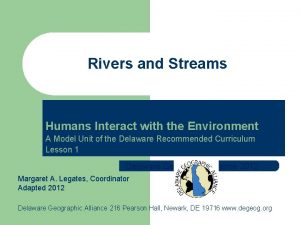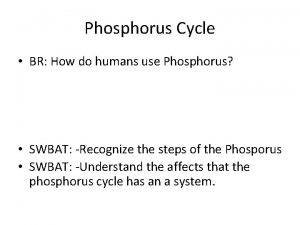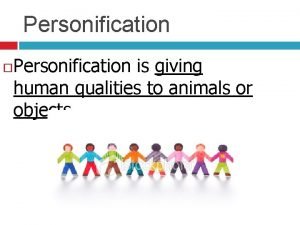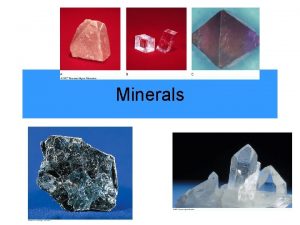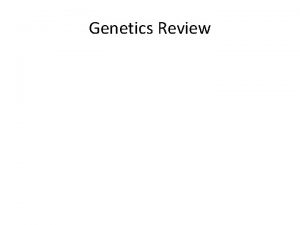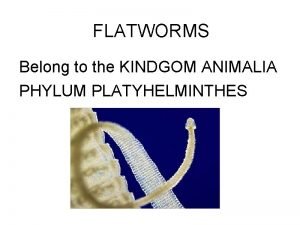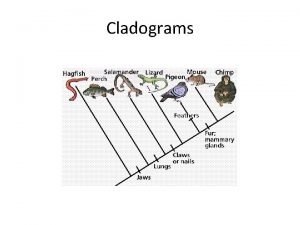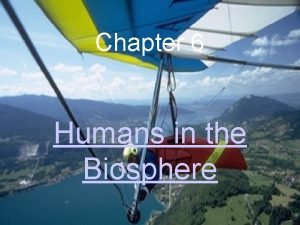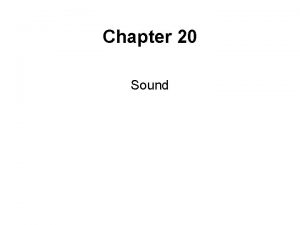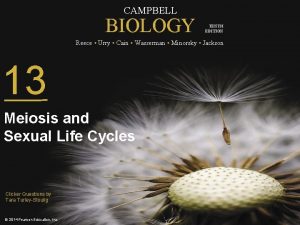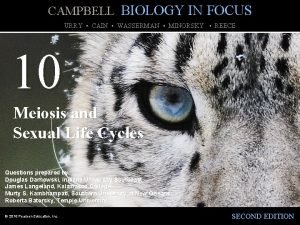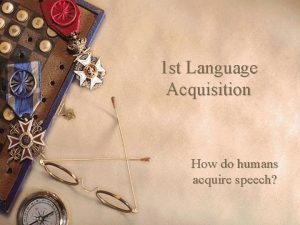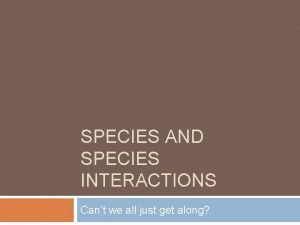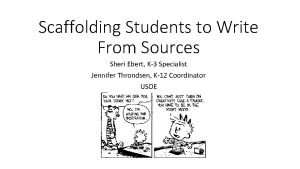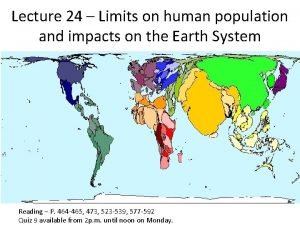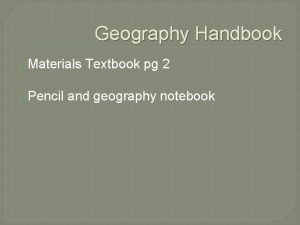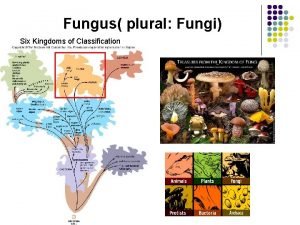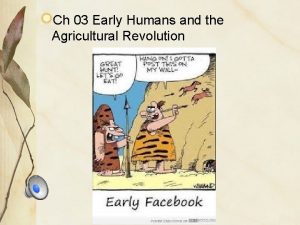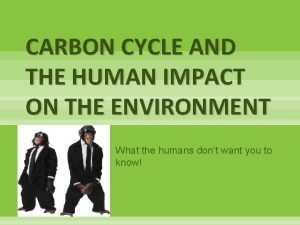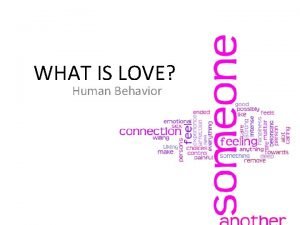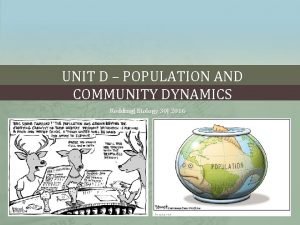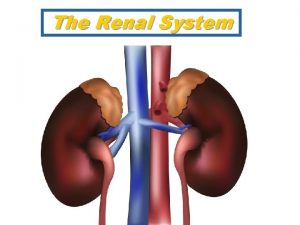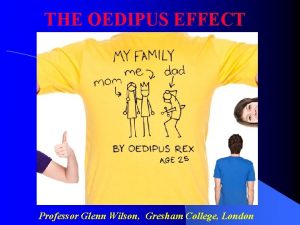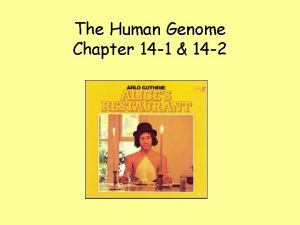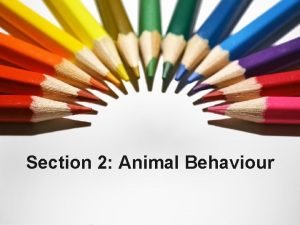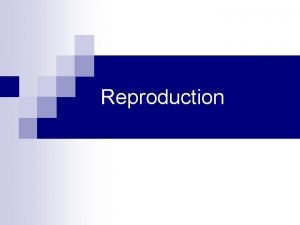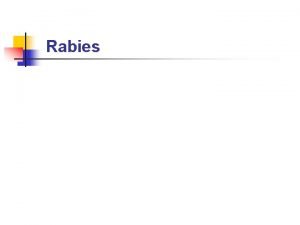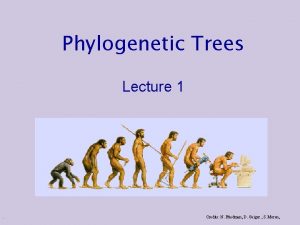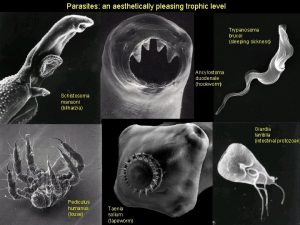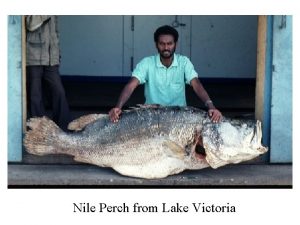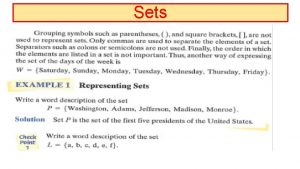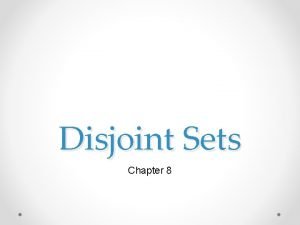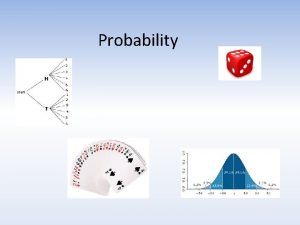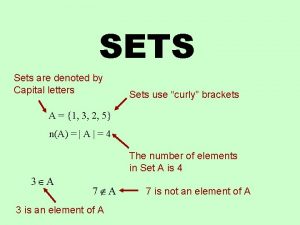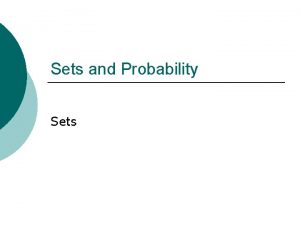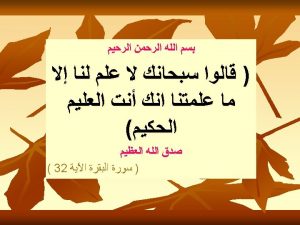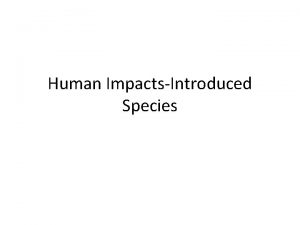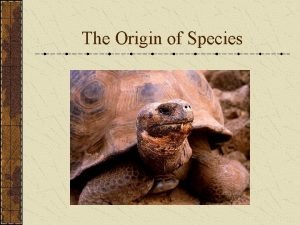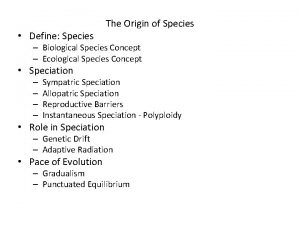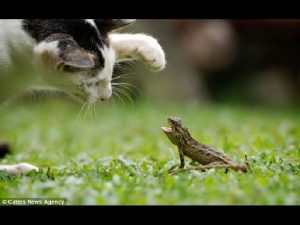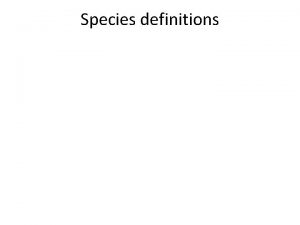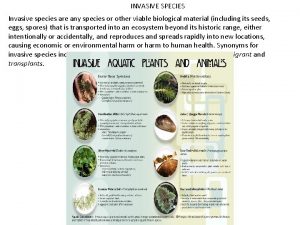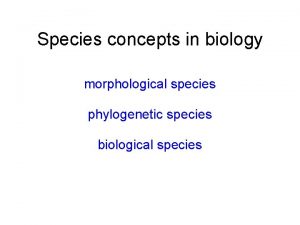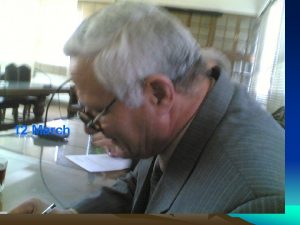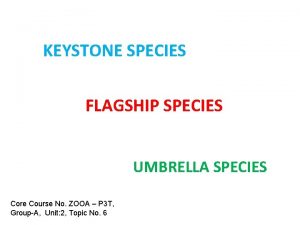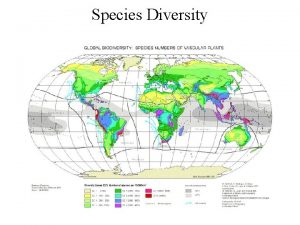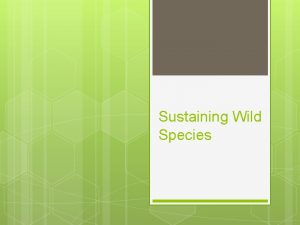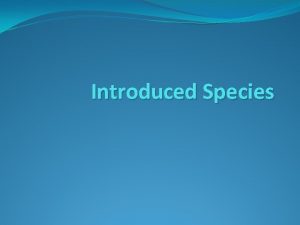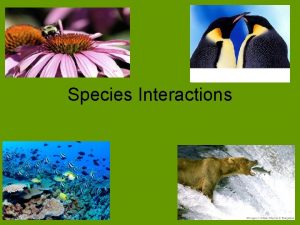What sets humans apart from all other species


















































































































- Slides: 114

What sets humans apart from all other species?

1. LANGUAGE – a set of sounds, combinations of sounds, and symbols that are used for communication.

• What does language allow us to do that other species cannot? – Communicate – Reason – Create CULTURE – Language is the foundation of culture

2. Mutual Intelligibility: Means two people can understand each other when speaking.

TOP TEN LANGUAGES IN THE WORLD Language Speakers in Millions Chinese 1213 Spanish 329 English 328 Arabic 221 Hindi 182 Bengali 181 Portuguese 178 Russian 144 Japanese 122 German 90. 3

TOP TEN LANGUAGES SPOKEN AT HOME IN THE UNITED STATES BY NON-ENGLISH SPEAKERS Language Percent Spanish 12. 2 Chinese 0. 9 Tagalog 0. 5 French 0. 5 Vietnamese 0. 4 German 0. 4 Korean 0. 4 Russian 0. 3 Arabic 0. 3 Italian 0. 3

3. The Language Tree • 19 Language Families • Each Family has its own branches • Each branch has its own groups • Each group has its own language • Each language has its own dialects

• Dialects A regional variety of a language distinguished by pronunciation, spelling, and vocabulary. • Languages • Language Group Several individual languages within a language branch – share a common origin in recent past – few differences in grammar and vocabulary • Language Branches A group of languages that share a common origin but have evolved into different languages 4. Language Family A collection of individual languages with a common ancestor

• Dialects A regional variety of a language distinguished by pronunciation, spelling, and vocabulary. • Languages • Language Group Several individual languages within a language branch – share a common origin in recent past – few differences in grammar and vocabulary 5. Language Branches A group of languages that share a common origin but have evolved into different languages • Language Family A collection of individual languages with a common ancestor

• Three Major Branches of Language in Europe Romance Languages – French, Spanish, Italian, Romanian and Portuguese – Areas controlled by Roman Empire – Local Languages mixed with Latin

Slavic Languages – Russian, Polish, Czech, Slovak, Ukrainian, Slovenian, Serbo-Croatian and Bulgarian – Developed as Slavic people migrated into present day Ukraine

Germanic Languages – English, German, Danish, Norwegian and Swedish – Expansion of peoples out of Northern Europe – Particularly Germanic tribes moving into areas dominated by Rome

• Dialects A regional variety of a language distinguished by pronunciation, spelling, and vocabulary. • Languages 6. Language Group Several individual languages within a language branch – share a common origin in recent past – few differences in grammar and vocabulary • Language Branches A group of languages that share a common origin but have evolved into different languages • Language Family A collection of individual languages with a common ancestor

• Dialects A regional variety of a language distinguished by pronunciation, spelling, and vocabulary. • Languages • Language Group Several individual languages within a language branch – share a common origin in recent past – few differences in grammar and vocabulary • Language Branches A group of languages that share a common origin but have evolved into different languages • Language Family A collection of individual languages with a common ancestor

7. Dialects A regional variety of a language distinguished by pronunciation, spelling, and vocabulary. • Languages • Language Group Several individual languages within a language branch – share a common origin in recent past – few differences in grammar and vocabulary • Language Branches A group of languages that share a common origin but have evolved into different languages • Language Family A collection of individual languages with a common ancestor

• Dialect: has its own grammar, vocabulary, syntax, and common expressions as well as pronunciation rules that make it unique from other dialects of the same language.

8. Isogloss : A geographic boundary within which a particular linguistic feature occurs

9. Dialect Chain: A set of contiguous dialects in which the dialects nearest each other at any place are most closely related.

CHINESE DIALECTS Gan Speakers in Millions 20. 6 Hakka 30 Huizhou 4. 6 Jinyu 45 Mandarin 845 Min Bei 10. 3 Min Dong 9. 1 Min Nan 47. 3 Min Zhong 3. 1 Wu 77. 2 Xiang Yue 36 55. 5

ARABIC DIALECTS Speakers in Millions Algerian 22. 4 Egyptian 54 Gulf (Iraq) 3. 6 Hijazi (Saudia Arabia) 6. 0 Mesopotamian (Iraq) 15. 1 Moraccan 21 Najdi (Saudia Arabia) 10 North Levantine (Syria) 14. 4 North Mesopatamian (Iraq) 6. 3 Saidi (Egypt) 19. 0 Sanaan (Yemen) 7. 6 South Levantine (Jordan) 6. 2 Sudanese 16. 8 Taizzi-Adeni (Yemen) 7. 1 Tunisian 9. 4

10. Accent: A distinctive mode of pronunciation of a language. Usually associated with a particular nation, locality, or social class (e. g. they have a strong southern accent). Refers only to the way words are pronounced.

http: //www. washingtonpost. com/ blogs/govbeat/wp/2014/07/10/vid eo-how-do-you-pronounce-water/

11. The Afro-Asiatic Family – 240 languages – 250 million speakers. – Includes ancient Egyptian, Hebrew, and Aramaic, as well as the great Nigerian language Hausa. – The many dialects of Arabic alone are spoken by as many as 200 million people.


12. The Dravidian Family • These are the "old" languages of India • 150 million speakers. • Best known are Tamil and Telugu.


13. The Sino-Tibetan Family • Includes 250 languages. • Mandarin Chinese alone is spoken by one billion people!


14. The Austronesian Family • Includes 1000 different languages • Spoken by about 250 million speakers • Malay and Indonesian (essentially the same language) account for about 140 million. • Other examples include – Madagascar in Africa – Tagalog in the Philippines – Many languages of the Pacific Islands, from Hawaiian in the north Pacific to Maori in New Zealand.


15. The Amerind Family (North America) • includes nearly 600 languages • 20 million speakers. • Some of the best known are – Ojibwa – Dakota (or Sioux) – Cherokee – Hopi – Nahuatl (or Aztec) – Mayan languages.


16. The Amerind Family (South America) • Well known languages include – Quechua (Inca) – Guarani – Carib. – The Andean language sub-family (which includes Quechua) numbers nearly nine million speakers!


17. The Niger-Congo Family • The largest sub-Saharan African family of languages • includes some 1, 000 languages • Close to 200 million speakers. • Includes – Mandinka – Swahili – Yoruba – Zulu


18. The Indo-European Family • The single largest language family – 150 languages – Three billion speakers. – Languages include • • Hindi and Urdu (400 million) Bengali (200 million) Spanish (300 million) Portuguese (200 million) French (100 million) German (100 million) Russian (300 million) English (400 million) in Europe and the Americas.


Language Diffusion

19. Proto-Tongue – Language developed nearly 2. 5 million years ago – All original speakers communicated in the prototongue or original language – As speakers diffused through migration, language divergence occurred and new languages and dialects spawned from the proto-language

20. Language Divergence: Occurs when speakers of the same language scatter and develop variations of that original language to meet their needs in new surroundings • As human groups came into contact with new concepts they created new words to describe them.

21. Language convergence : When peoples with different languages have consistent spatial interaction and their languages collapse into one.

22. Language Shift: When speakers come into contact with other languages, a blending of the two languages can occur

23. Language Replacement: Occurs when invaders replace the language of those places they conquer.

24. Reverse Deconstruction: Process to trace the path of a languages diffusion. Tracks sound shifts and the hardening of consonants backward to reveal an “original” language. – Can deduce the vocabulary of an extinct language. – Can recreate ancient languages (deep reconstruction)

25. Sound Shifts: Slight change in a word across languages over time. Used to find linkages among languages. eg. Milk = lacte in Latin latta in Italian leche in Spanish lait in French

26. Deep Reconstruction

27. Nostratic Language: Believed to be the ancestral language of PIE as well as the Kartvelian, Uralic-Altaic, Afro-Asiatic and Dravidian language families.

28. Diffusion of Proto-Indo-European • Two Major Theories – Conquest – Dispersal or Agricultural

29. Conquest Theory • Early speakers of PIE (proto-indo-european) spread from east to west on horseback • Overpowered earlier inhabitants through warfare and technology • Sound shifts show long period of divergence moving slowly west

Hearth was Kurgan Empire (modern day Ukraine)

30. Dispersal or Agricultural Theory • PIE diffused westward with the diffusion of agriculture / farming • Farming innovation spread – replaces hunting and gathering • Farmers complete spread across Europe in about 1500 years • Some non-farmers hold out and their languages do not change – example Euskera in the Basque region of Spain. • Agricultural theory also known as Renfrew Hypothesis

Hearth was Anatolia Region (modern day Turkey)

31. HISTORY OF ENGLISH in 10 minutes • http: //www. youtube. com/watch? v=H 3 r 9 b. Ok. Y W 9 s Assignment - A 60 second Adventure in the History of English

• Rome leaves Britannica • Anglos move in from Northern Germany (Angloland – England) bringing native language to the Island • Christian Church established – continues mixing of Latin and Anglo/English • Vikings invade – mix some vik language in • Normans (French) Invade – French becomes language of power, English language of the poor and powerless • 100 year war – French out – English the language of power • English Empire – Colonize and spread English around world – mixing thousands of languages with English

• Over centuries English is established as a dominant language in – Literature (Shakespeare) – Science – Religion (King James Bible) – Dictionaries (standardized which makes spread easier) – Economics (Capitalism) – Internet

32. Standard Language: a language that is published, widely distributed, and purposefully taught. Government usually plays a big role in standardizing a language.

33. Monolingual State a country in which only one language is spoken Japan, Iceland, Denmark 34. Multilingual State a country in which more than one language is in use India, Peru, United States

35. Official Language adopted by the government. Usually selected by elite and becomes the language of courts and government.

36. Lingua Franca • A common language used among speakers of different languages for the purposes of commerce and trade. – English is considered the lingua franca of academics

DON’T INSIST ON ENGLISH • http: //www. ted. com/talks/patricia_ryan_idea s_in_all_languages_not_just_english? languag e=en

37. Pidgins: When people who speak two or more languages are in contact and they combine parts of their language in a simplified structure and vocabulary – Is a second language for everyone who uses it – Often used in business or work supervision – Very simplified – think 2 year old speech

38. Creole: Language that evolves when a pidgin becomes the first language of a group of speakers. – May lose their mother tongue from disuse – More complex grammatical structure and enhanced vocabulary – Think 4 -5 year old speech

Nigerian Creole • http: //www. youtube. com/watch? v=D 8 GRpu 6 c 71 I

• Us two bin get hard time raising dog • The two of us had a hard time raising dogs • John them stay cockroach the kaukua • John and his friends are stealing the food • More better I bin go Honolulu for buy om • It would have been better if I’d gone to Honolulu to buy it

• Mo pe aste sa banan • I am buying the banana • French based Seychelles Creole • A waka go a wosu • He walked home • English based Cape York Creole • Ja fruher wir blieben • Yes, at first we remained • German based Papua New Guinea Pidgin

39. Language Extinction: When a language is no longer used.

https: //www. youtube. com/watch? v=ei. W 59 UUivc 0 • http: //news. bbc. co. uk/2/hi/south_asia/84985 34. stm



• Language Extinction Case Study – Choose a language currently on the brink of extinction. – Research the language and respond to the following prompts • Where is the language spoken • How many currently speak the language • Provide a brief history of the language (think 60 second history of English). • Identify 3 factors leading to the languages extinction. • One page write up in notebook.

40. Toponym: Place names 41. Toponymy: The place names of a region or the study of place names.

Toponyms • Naming things is one of the primary purposes of language • Study of toponyms can give you insight into immigration patterns, colonial influence, religion, language and cultural diffusion. – “burg” = city – German roots – Hamburg – City in Germany – Pittsburgh – City in United States

• Place names often consist of two parts a generic classifying part - River a specific modifying, or particular part - Red In English the specific usually comes first Red River Two Oregon Examples In French the generic usually comes first River Rouge Two examples - anywhere

42. Postcolonial Toponyms • After colonies became independent countries they often changed place names.


43. Post Revolution Toponyms: Place names changed after a revolution. – St Petersburg was changed to Leningrad after the Russian Revolution and has now been changed back after the fall of communism

44. Memorial Toponyms: Change in place name to memorialize an important person or event. • 3 Examples?


10 Toponym Types • • • Descriptive Associative Commemorative Commendatory Incidents Possession Folk Manufactured Mistakes Shift DEFINE EACH AND FIND TWO EXAMPLES NOT IN TEXTBOOK






PART A (1 point) • Define “lingua franca. ” • Definition: A lingua franca is any language used as a common means of communication, especially in trade or business transactions, in an area where several different languages are spoken, such as Swahili in East Africa • Must show understanding of use: means of communication in trade. It is not necessary to provide an example (Swahili) to get the definition point. However, NO point is awarded for simply providing an example without the definition.

PART B (4 points: 1 point for the identification of each of two correct reasons or factors, and 1 point for each of two discussions) • Identify and discuss TWO reasons for the current rate of diffusion of English as a lingua franca. • Reasons (any TWO of the following): • • Mass media—Global communications networks (movies, television, advertising) touch people’s lives in almost every corner of the world. Much of this communications industry is based in the U. S. ; therefore, English is the dominant language of communications media and associated with things modern or advanced. • • Business/banking—English has become the common language in global business and banking industries. As a consequence, English has filtered down to activities at all levels.

• PART C (4 points: 1 point for a brief statement, and 1 point for the amplification of the statement for each • country selected. ) • Briefly discuss the role of English in TWO of the following countries today. • Germany • Japan • Nigeria


• Where did language first evolve?

• http: //www. youtube. com/watch? v=J 0 phq 7 lit Tc








• THE QUESTION: • At the same time that English is solidifying its role as the world’s premier lingua franca, lesser-used minority languages (such as Welsh, Basque, and Inuktitut) are undergoing revival. • Discuss three distinct factors promoting the revival of minority languages in the face of globalization.


• The Afro-Asiatic Family


• The Dravidian Family

• The Sino-Tibetan Family


• The Austronesian Family


• The Amerind Family (North America)


• The Amerind Family (South America)


• The Niger-Congo Family


 Keystone species in desert
Keystone species in desert All humans are same
All humans are same All humans are same
All humans are same Draw three noncollinear points j k and l
Draw three noncollinear points j k and l Whether she a good actress or not is a of opinion
Whether she a good actress or not is a of opinion About 41 percent of all fish species inhabit
About 41 percent of all fish species inhabit Self initiated other repair
Self initiated other repair Why was polo a popular sport among wealthy muslims
Why was polo a popular sport among wealthy muslims We are all connected to each other
We are all connected to each other Jesus the name above all other names lyrics
Jesus the name above all other names lyrics Introduction of transport
Introduction of transport Teixits humans
Teixits humans Inbreeding depression
Inbreeding depression First human on earth
First human on earth A sexual reproduction in humans
A sexual reproduction in humans Karyotype
Karyotype Taxonomy of cat
Taxonomy of cat Commensalism examples in humans
Commensalism examples in humans Parasitism
Parasitism Equity theory in organisational behaviour
Equity theory in organisational behaviour Gill pouches in humans
Gill pouches in humans Reproduction human
Reproduction human Lytta virus is real
Lytta virus is real Where did humans originate
Where did humans originate How many miles per hour can humans run
How many miles per hour can humans run What is a beneficial mutation in humans
What is a beneficial mutation in humans What is a beneficial mutation
What is a beneficial mutation Where does meiosis occur? *
Where does meiosis occur? * Number of chromosomes in meiosis
Number of chromosomes in meiosis Homologous pairs vs sister chromatids
Homologous pairs vs sister chromatids Chordata taxonomy
Chordata taxonomy Inherited traits and learned behaviors 5th grade
Inherited traits and learned behaviors 5th grade Do humans share dna with bananas
Do humans share dna with bananas Human ingenuity essay
Human ingenuity essay How do humans affect the water cycle
How do humans affect the water cycle What is codominance
What is codominance Research on the pros and cons of genetic engineering
Research on the pros and cons of genetic engineering Examples of epistasis in humans
Examples of epistasis in humans How many teeth does a human have
How many teeth does a human have Ozone depletion effect on humans
Ozone depletion effect on humans Venn diagram abiotic and biotic
Venn diagram abiotic and biotic About early humans for class 6
About early humans for class 6 What is the taxonomy of a domestic dog
What is the taxonomy of a domestic dog Desertification effects on humans
Desertification effects on humans What kingdom do humans belong to
What kingdom do humans belong to Taxonomic hierarchy of lion
Taxonomic hierarchy of lion Kingdom phylum class order of humans
Kingdom phylum class order of humans Post anal tail in humans
Post anal tail in humans Effect of carbon monoxide on human body
Effect of carbon monoxide on human body Concept mapping circulation in humans chapter 34
Concept mapping circulation in humans chapter 34 Learned behavior
Learned behavior Number of chromosomes in meiosis
Number of chromosomes in meiosis Why is carbon the building block of life
Why is carbon the building block of life Biotechnology selective breeding
Biotechnology selective breeding How many chromosomes do humans have
How many chromosomes do humans have Animals including humans year 6
Animals including humans year 6 Animal that only eats plants
Animal that only eats plants Kingdom phylum class order of humans
Kingdom phylum class order of humans Kenyanthropus
Kenyanthropus How many senses do humans have
How many senses do humans have Chapter 21 human reproduction answer key
Chapter 21 human reproduction answer key Diagrammatic sectional view of ovary
Diagrammatic sectional view of ovary Human impact on lithosphere
Human impact on lithosphere Hair consists of two parts
Hair consists of two parts Chapter 34 section 1 the circulatory system
Chapter 34 section 1 the circulatory system Chapter 3 early humans and the agricultural revolution
Chapter 3 early humans and the agricultural revolution Albino humans
Albino humans Are humans inherently good or evil
Are humans inherently good or evil Seahorse name
Seahorse name Elicited behavior
Elicited behavior Animals including humans year 4
Animals including humans year 4 Saddle thrombus treatment
Saddle thrombus treatment Stream the humans
Stream the humans How do humans negatively affect the phosphorus cycle
How do humans negatively affect the phosphorus cycle Personification about school supplies
Personification about school supplies Stages of parturition in humans
Stages of parturition in humans Why do humans cannot survive without minerals
Why do humans cannot survive without minerals How many pairs of chromosomes
How many pairs of chromosomes Phylum
Phylum Sphere interactions examples
Sphere interactions examples Catfish backbone
Catfish backbone Chapter 6 humans in the biosphere
Chapter 6 humans in the biosphere The sound waves that most humans cannot hear are
The sound waves that most humans cannot hear are Privet shrubs and humans each have a diploid number of 46
Privet shrubs and humans each have a diploid number of 46 Privet shrubs and humans each have a diploid number of 46
Privet shrubs and humans each have a diploid number of 46 Three different ways humans regionalize the earth
Three different ways humans regionalize the earth How do humans acquire language
How do humans acquire language Binomial nomenclature humans
Binomial nomenclature humans Sheri ebert
Sheri ebert Keelingcurve
Keelingcurve Dominic jordan
Dominic jordan What is the relationship between humans and the environment
What is the relationship between humans and the environment Fungi or fungus plural
Fungi or fungus plural Early humans chapter 1 section 1
Early humans chapter 1 section 1 Digital adoption platform insights
Digital adoption platform insights Lesson 1 early humans
Lesson 1 early humans Early humans and the agricultural revolution answer key
Early humans and the agricultural revolution answer key Desertification effects on humans
Desertification effects on humans Humans alter the sulfur cycle by
Humans alter the sulfur cycle by Humans behavior
Humans behavior A hypothetical population of 10 000 humans has 6840
A hypothetical population of 10 000 humans has 6840 Location of human kidney
Location of human kidney Oedipus and electra complex
Oedipus and electra complex Disproportionate dwarfism pictures
Disproportionate dwarfism pictures Photo of digestive system
Photo of digestive system Biological immortality humans
Biological immortality humans Resemble those humans
Resemble those humans Behaviour of animals
Behaviour of animals Sexual reproduction in humans
Sexual reproduction in humans Cats rabies
Cats rabies Examples of co dominance
Examples of co dominance Rhobencephalon
Rhobencephalon Primate evolutionary tree
Primate evolutionary tree Strepsiptera
Strepsiptera Inbreeding in humans
Inbreeding in humans

